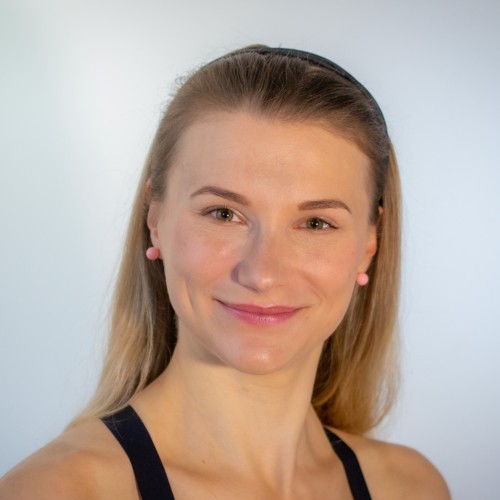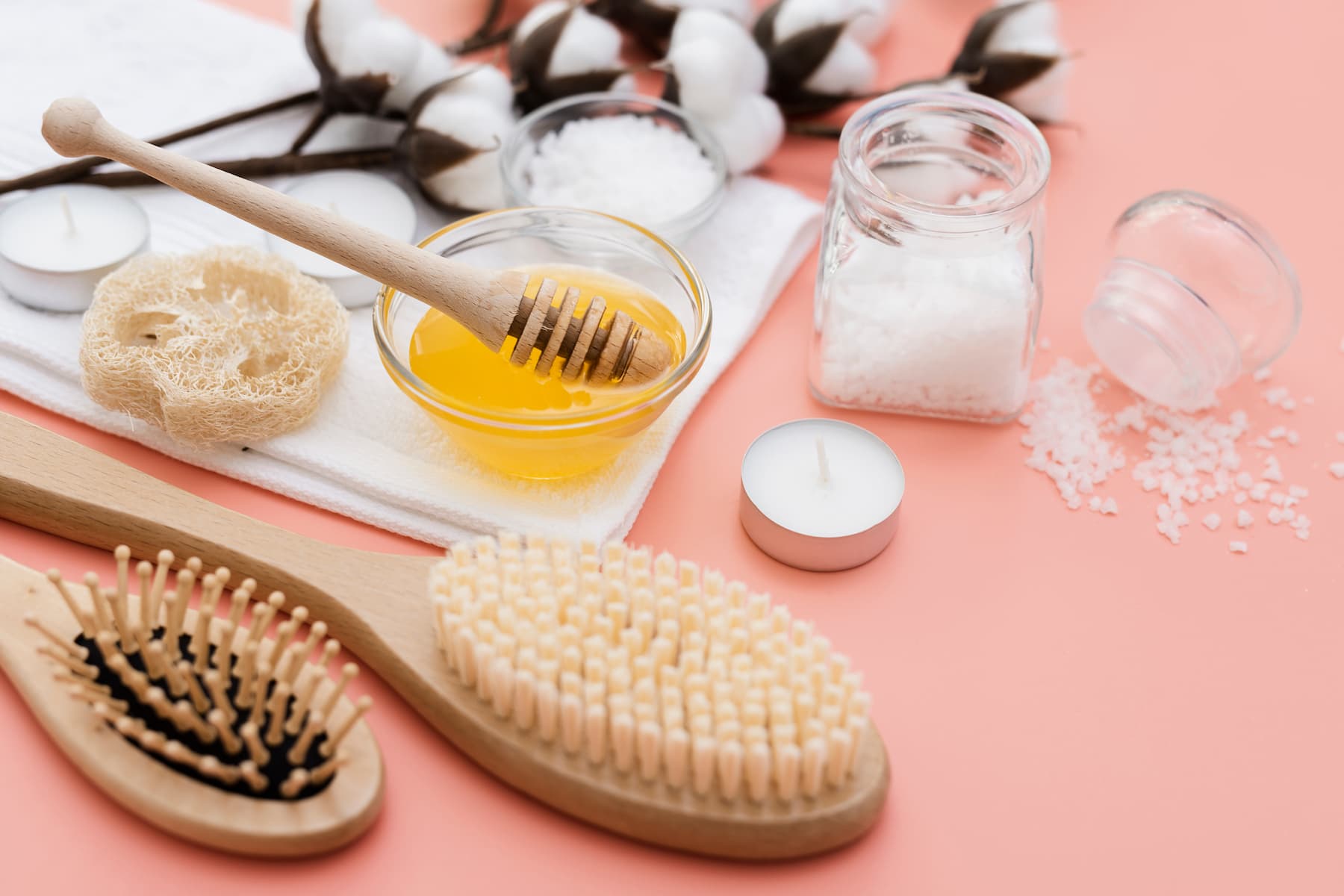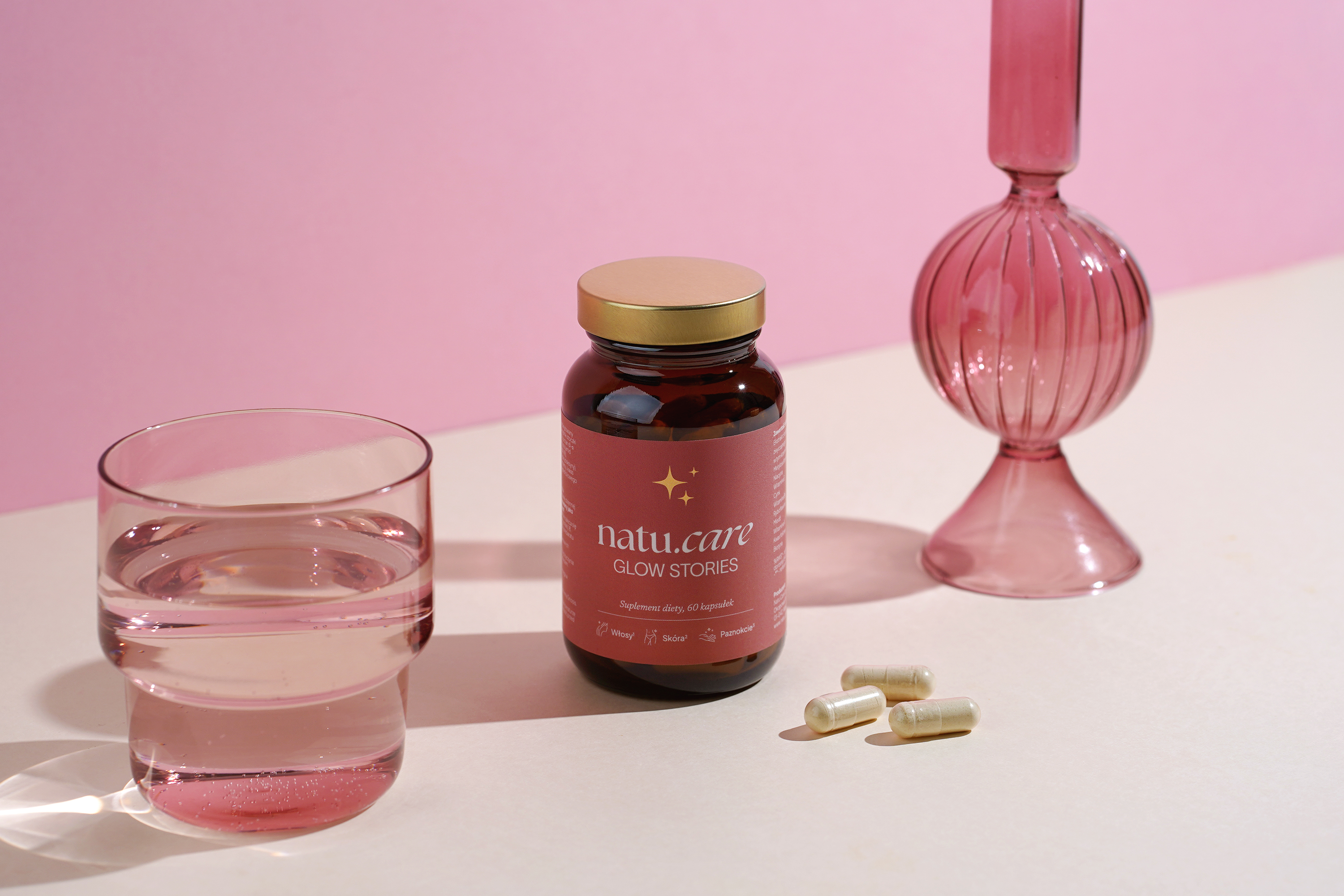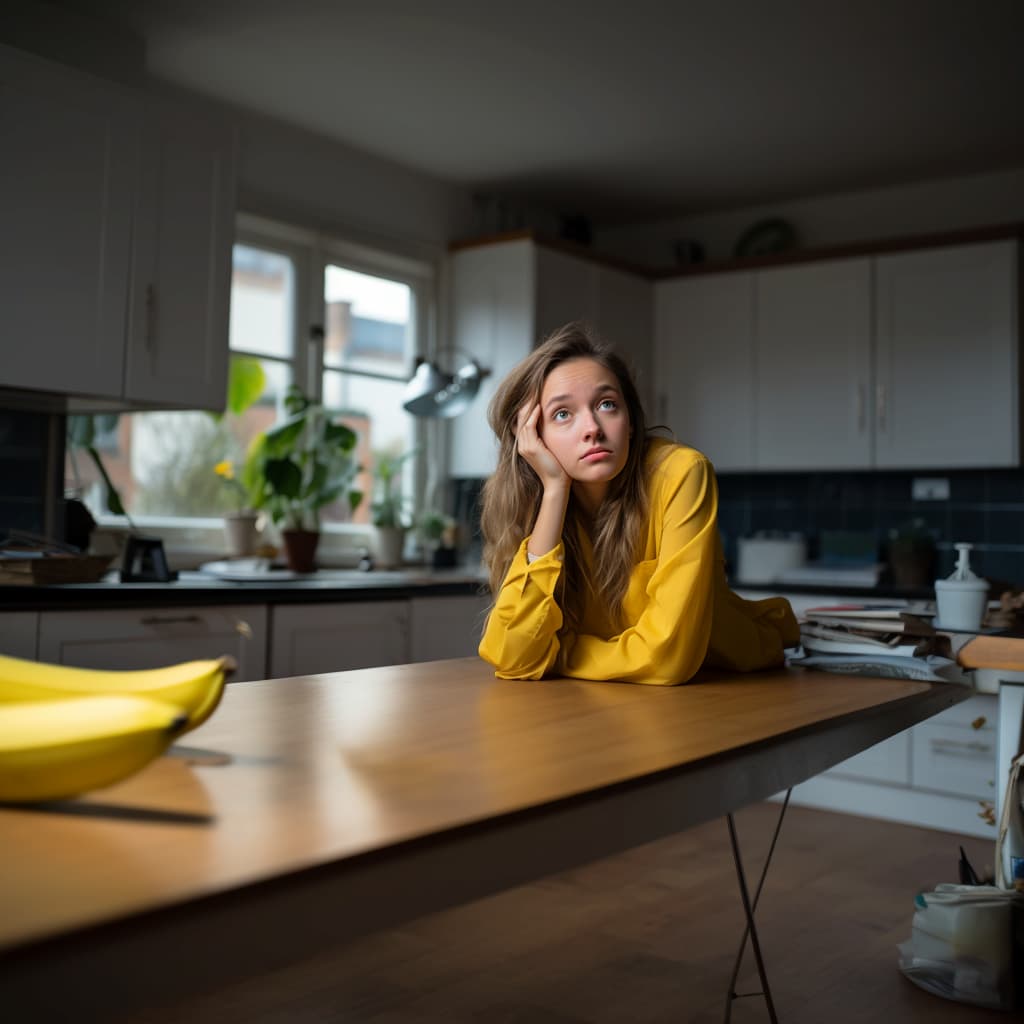These hair 'cosmetics' are a HIT, and you won't pay anything for them. Check it out!
Before you click Buy Now at the online drugstore, check what hair 'cosmetics' you can find in your kitchen.


Learn more about our editorial process
.

Learn more about our editorial process
.

Learn more about our editorial process
.

Learn more about our editorial process
.
Why you can trust us
Articles on Natu.Care are written based on scientific research, data from government websites and other reliable sources. The texts are written in cooperation with doctors, nutritionists and other health and beauty experts. Articles are reviewed before publication and during significant updates.
.Learn more about our editorial process
.Information about advertisements
Content on Natu.Care may contain links to products from the sale of which we may receive a commission. When creating content, we adhere to high editorial standards and take care to be objective about the products discussed. The presence of affiliate links is not dictated by our partners, and we select the products we review ourselves completely independently.
.Learn more about our terms and Conditions
.You have great hair products at home and you don't even know it. See how to conjure up cosmetic wonders from products that almost everyone has in their kitchen.
Before you spend millions of coins on masks, conditioners, oils and rubs, try a few home remedies to improve the appearance of your hair. You'll be surprised how simple, fragrant and... (sometimes) tasty they are. PS. Your wallet will be proud of you.
.
From this article you will learn:
.- Which foods you can apply to your hair.
- Which foods you can apply to your hair.
- What cosmetic effects certain fruits, vegetables, oils and herbs have. .
- How to make homemade hair cosmetics for pennies.
- How to make homemade hair cosmetics for pennies.

Odkryj, co dla Twojej urody może zrobić Natu.Care Glow Stories -15% z kodem BLOG15
Skóra, włosy, paznokcie: Glow Stories
Wesprzyj prawidłowy stan skóry, włosów i paznokci i ochroń komórki przed stresem oksydacyjnym!
Sprawdź cenę
Glow Stories to formuła aktywnych składników, które zostały starannie dobrane wedle najnowszych badań naukowych. Znajdziesz w nich biotynę, cynk i miedź pielęgnujące zdrowie włosów i promiennej cery. Ponadto cynk jest odpowiedzialny także za zachowanie zdrowych paznokci. Mądra suplementacja zadba o Twoje piękno od środka.Julia Skrajda, dietetyk kliniczny
See also:
- Hair care in a nutshell .
- Hair oiling
- Best hair conditioners
- Best shampoos for hair loss
- Best hair supplements
- Best vitamins for hair
- Hair collagen
For starters
.
Below you'll find very simple (but really baaaay simple) "cosmetics" that you can make yourself at home. Most of them are one or two ingredients. You may be thinking to yourself: a bit weak, especially as store-bought conditioners often have a veritable Periodic Table of ingredients.
Well, these recipes are simple by design.
Secondly... From my own experience, I know that if I see a list of 13 ingredients that have to be peeled, mashed, blended, cooked, mixed... I'm already discouraged.
.
Thirdly, once you have figured out what your hair looks sensational after and what ingredient provides you with a particular effect, you can mix and add more products. Experiment, swap and see what works best.
Important
There are some hair types that are so prone to overload that they may need shampooing even after masks, which in theory should come off when rinsed with water. Unfortunately, you'll have to find out for yourself (your hair?) if you have such knockoffs.
There is one more important thing:
.
From our office work, we observe that at least 80% of clients presenting with completely different problems have major problems with abnormal scalp images (itching, erythema, excessive dryness or excessive sebaceous glands, keratinous pus or Psoriasis) and it is obligatory that we start our trichology work with solving these problems..
 .
.
Katarzyna SrebrCosmetologist
.
If you have any scalp problems, see a trichologist and don't try to treat yourself on your own. Home-made masks and rubs can also worsen scalp conditions.
Oils
.
Have you read about oiling your hair and want to try it? Before you rush to the drugstore and drown in the manufacturers' suggestions, see if your hair will like olive oil or sunflower oil.
Oils
Before you rush to the drugstore and drown in the manufacturers' suggestions, see if your hair will like olive oil or sunflower oil.
Olive oil will work well for dry and damaged hair. It can be liked by owners of high- and medium-porous strands. It has a nourishing effect and is a natural emollient, meaning it has a protective, softening and smoothing effect on the hair.
Sunflower oil (yes, exactly the oil you fry pancakes in) is less heavy, so if olive oil has proved too heavy for you, try it. Additionally, this oil will work better for thinner hair.
.
Oiling with edible oils is done in the same way as with cosmetic products. Apply to dry or slightly dampened hair a few drops and comb thoroughly.
To ensure your oiling doesn't end in a flop (or rather flop), emulsify the oil before washing it off. Emulsifying helps the oil to dissolve and remove it more easily from your hair and scalp. To emulsify the oil, apply conditioner to your hair and hold for 20 minutes. After this time, wash your head twice with shampoo.
.
Herbal teas
.
You can make rinses and rubs from herbal teas. When you look in the tea cupboard, you'll probably find mint, lemon balm and sage. These are the most popular herbs to drink. Slightly less well-known, but also working wonders, are rosemary and field horsetail teas.
Mint is great for oily hair. The rinse will refresh the scalp. It will also work to promote hair growth.
Melissa also has a regulating effect on the scalp and will also add shine to your hair. You can combine the properties of both teas in one rinse to intensify their effect.
Melissa s properties can be combined in one rinse.
Sage is gently moisturising, so will be great for dry, damaged hair. It can also darken colour, so blondes should avoid it. However, for brunettes it will work perfectly.
.
Rosemary, although less common in home herbalists, is the true king of hair care. Most DIY hair geeks are delighted with its effects. Unjustifiably so. Rosemary contains flavonoids and vitamin C, which are natural antioxidants. It also has a lot of B vitamins. The scalp will like it for its microcirculation-stimulating properties and its anti-inflammatory and anti-fungal effects. Hair will be delighted with the shine it adds to it.
.
Horsetail will, in turn, be an excellent remedy for weakened and falling hair. Thanks to its silicon content, it will have a positive effect on both the condition of the scalp and the better settlement of hair in the follicles.
Important
When trying new ingredients, remember that herbs - like all plants - can be allergenic. You can test whether a product causes you any adverse reactions by applying a little to a small patch of skin in an inconspicuous area.
To make a wash of herbal tea (or dried herbs), simply pour boiling water over it, cover with a saucer and wait about 15 minutes. Once the decoction has brewed, let it cool. If you are using loose herbs, pour the liquid through a strainer to get rid of any remaining dried herbs.
Apply the rinse as the last step when washing your hair - after thoroughly rinsing out your shampoo and conditioners.
And how do you make wash? Exactly the same way. Brew your chosen herb or mix of herbs, let cool, and massage the resulting tea into your scalp. Hold for half an hour and wash your head.
.
Pro tip
For hair growth, a field horsetail and nettle rub is great.
.
Gallium
.
If you are dreaming of a hair laminating treatment, I have good news. You can safely do it yourself at home. You'll be helped by... jelly or gelatine (because that's what it's all about).
And if you don't know what all this lamination is, I'm already explaining. Laminating is simply covering a surface with another layer (usually a protective layer). A good example is the lamination of important documents or diplomas, which involves coating the paper with a special film so that it doesn't get damaged.
Similar to this, you can also laminate important documents or diplomas.
Similarly, you can protect your hair and even overbuild the cavities that are present a little. Of course, the securing and overbuilding will be a temporary and visual effect, as once damaged hair cannot be renewed.
The hair can't be renewed.
After jelly lamination, the hair will be protected by a gelatinous protective layer, shiny and pleasantly loose (this is one of the best ways to streak). They can also appear slightly thicker.
To make homemade lamination, I recommend using jelly because... it smells better than regular gelatine. Well, and you can just eat the unused part. It's best to use colourless jelly, especially if you have light-coloured hair. This is because intense food colourings can stain hair.
.
Ingredients:
- 1 tbsp jelly .
- 1 tbsp water .
- 1 tbsp of any hair conditioner .
Preparation:
To prepare your laminating beauty product, simply combine jelly, warm water and any conditioner in equal proportions. Adjust the exact amounts of ingredients according to the length and density of your hair. In my case, a tablespoon of jelly is enough. I dissolve it in a tablespoon of water and add a tablespoon of conditioner at the end. Tadam!
Protip
If lumps have formed in your laminating mask, you can melt it in a water bath - just like you melt chocolate. Just remember not to bring the product to the boil, but only to heat it slightly. Cool the whole thing down before applying it to your hair.
.Application:
.
Apply the jelly mask to hair that has been washed with a heavily cleansing shampoo (can be one with SLES or SLS). Laminate only the length of your hair - do not apply the mixture to your scalp.
If your scalp is not prone to severe oiliness, you can put on a foil cap and make a towel turban to intensify the effect. The heat will make it easier for the mask to penetrate the hair structure. Keep the jelly conditioner on your strands for about 30-45 minutes. After this time, rinse hair thoroughly with water.
.
Application
.
Natural yoghurt and cream are great products that can be the base of many DIY conditioners and masks. On their own, they are a source of proteins, and thanks to their lactic acid content, they close the hair's scales. This leaves strands nourished and shiny.
.
To such a base, you can add a purée of your chosen vegetables or fruit, a few drops of your chosen oil (olive oil) and other foods. A simple recipe? Please:
Ingredients:
- 2-3 tbsp natural yoghurt .
- 1 teaspoon cocoa .
Preparation:
Add a little cocoa to the natural yogurt and mix.
.
Application:
.
Apply to hair. Keep for about 15 minutes, rinse thoroughly and shampoo your hair. This conditioner will add volume to your hairstyle.
Pro tip
Want to add another dose of hydration to your yoghurt mask? Try pouring in a sachet of Cacao Bloom collagen instead of the cocoa.
Try this.
Ingredients:
- 2-3 tablespoons of natural yoghurt .
- 1 sachet of Premium Collagen in cocoa flavour .
Preparation:
.
Combine ingredients.
.
Application:
.
Apply to hair and hold for a minimum of 15 minutes. The Dutch cocoa contained in the collagen sachet will increase the volume of your hair and the collagen will act as a humectant.
Natu.Care Collagen Premium 5000 mg, cocoa

- Collagen content: 5000 mg marine collagen hydrolysate
- .
- Additional active ingredients: vitamin C, low molecular weight hyaluronic acid (and L-theanine and coenzyme Q10 in cocoa flavoured collagen or vitamin A and vitamin E in mango–passion fruit flavoured collagen)
- .
- Form: powder sachets
- .
- Dose: 1 sachet per day
- .
- Sufficient for: 30 days
- .
Product description
Fish collagen from the Natu.Care brand in a dose of 5000 mg, based on certified ingredients of the best quality. Regular supplementation will positively influence the appearance of the skinóry, hairów and nails – they will be rebuilt and strengthened from the inside.
In addition to collagen, which is valuable for health and beauty, it also offers other active ingredients that help to maintain a youthful complexion, shiny hair and strong nails.
The formula contains a sufficient portion of the active ingredient to positively affect joints, the musculoskeletal system and immunity.
Natu.Care Premium Collagen is available in two – Cacao Bloom and Rise&Shine flavours. Both formulas are based on the following active ingredients: marine collagen hydrolysate, wild róve bud extract and hyaluronic acid.
Additionally, Cacao Bloom contains natural L-theanine, coenzyme Q10 and defatted Dutch cacao. Rise&Shine instead contains vitamin E and vitamin A.
These are the best collagens in the world.
These best fish collagens on the market also rós taste – Cacao Bloom is a treat for chocolate lovers. Rise&Shine will appeal to those whoólike the refreshing taste of mangoófruit and passion fruit.
Pros and cons
Fish collagen from the Natu.Care brand in a dose of 5000 mg, based on certified ingredients of the best quality. Regular supplementation will positively influence the appearance of the skinóry, hairów and nails – they will be rebuilt and strengthened from the inside.
In addition to collagen, which is valuable for health and beauty, it also offers other active ingredients that help to maintain a youthful complexion, shiny hair and strong nails.
The formula contains a sufficient portion of the active ingredient to positively affect joints, the musculoskeletal system and immunity.
Natu.Care Premium Collagen is available in two – Cacao Bloom and Rise&Shine flavours. Both formulas are based on the following active ingredients: marine collagen hydrolysate, wild róve bud extract and hyaluronic acid.
Additionally, Cacao Bloom contains natural L-theanine, coenzyme Q10 and defatted Dutch cacao. Rise&Shine instead contains vitamin E and vitamin A.
These are the best collagens in the world.
These best fish collagens on the market also rós taste – Cacao Bloom is a treat for chocolate lovers. Rise&Shine will appeal to those whoólike the refreshing taste of mangoófruit and passion fruit.
Additional information
Fish collagen from the Natu.Care brand in a dose of 5000 mg, based on certified ingredients of the best quality. Regular supplementation will positively influence the appearance of the skinóry, hairów and nails – they will be rebuilt and strengthened from the inside.
In addition to collagen, which is valuable for health and beauty, it also offers other active ingredients that help to maintain a youthful complexion, shiny hair and strong nails.
The formula contains a sufficient portion of the active ingredient to positively affect joints, the musculoskeletal system and immunity.
Natu.Care Premium Collagen is available in two – Cacao Bloom and Rise&Shine flavours. Both formulas are based on the following active ingredients: marine collagen hydrolysate, wild róve bud extract and hyaluronic acid.
Additionally, Cacao Bloom contains natural L-theanine, coenzyme Q10 and defatted Dutch cacao. Rise&Shine instead contains vitamin E and vitamin A.
These are the best collagens in the world.
These best fish collagens on the market also rós taste – Cacao Bloom is a treat for chocolate lovers. Rise&Shine will appeal to those whoólike the refreshing taste of mangoófruit and passion fruit.
User review
Fish collagen from the Natu.Care brand in a dose of 5000 mg, based on certified ingredients of the best quality. Regular supplementation will positively influence the appearance of the skinóry, hairów and nails – they will be rebuilt and strengthened from the inside.
In addition to collagen, which is valuable for health and beauty, it also offers other active ingredients that help to maintain a youthful complexion, shiny hair and strong nails.
The formula contains a sufficient portion of the active ingredient to positively affect joints, the musculoskeletal system and immunity.
Natu.Care Premium Collagen is available in two – Cacao Bloom and Rise&Shine flavours. Both formulas are based on the following active ingredients: marine collagen hydrolysate, wild róve bud extract and hyaluronic acid.
Additionally, Cacao Bloom contains natural L-theanine, coenzyme Q10 and defatted Dutch cacao. Rise&Shine instead contains vitamin E and vitamin A.
These are the best collagens in the world.
These best fish collagens on the market also rós taste – Cacao Bloom is a treat for chocolate lovers. Rise&Shine will appeal to those whoólike the refreshing taste of mangoófruit and passion fruit.
Honey
.
Another tasty hair mask is yoghurt or cream with honey added. In the recipe above, substitute cocoa for a tablespoon of honey or add it to both ingredients. Honey is a natural humectant that will take care of moisturising your hair. It will add softness and beautiful shine.
.
You can also add honey to other ingredients. For those with very dry hair, a combination of two moisturisers will work well: honey and avocado.
Humectant.
Ingredients:
- avocado
- 3 teaspoons of honey .
Preparation:
.
Blend a peeled avocado with three teaspoons of sweet relish. And there you have it.
Application:
.
Apply to the length of your hair. Hold for 15-30 minutes. Rinse thoroughly and wash your hair with shampoo. If you are worried that you won't wash your hair because the honey is sticky, use warm (but not hot!) water to rinse and wash. The honey will dissolve better in it.
And if you are concerned about hair growth...
.
Ingredients:
- 50 grams of honey .
- 125 millilitres of milk .
Preparation:
.
Stir the honey into the milk.
.
Application:
.
Massage this rinse-conditioner into both your hair and scalp. After 15 minutes, rinse thoroughly with lukewarm water.
>
For severely damaged hair, add olive oil.
.
Ingredients:
- 2 tbsp honey .
- 1 tbsp olive oil .
Preparation:
.
Mix the honey with the olive oil. The easiest way to combine these ingredients is to pour them into a jar, cap it tightly and shake it firmly. Well, unless you have a shaker - in which case use a shaker.
Application:
.
Keep on your hair for a minimum of 15 minutes. Then apply any conditioner to emulsify the oil and wait another 15 minutes. Then wash your head thoroughly with shampoo.
.
Flaxseed
.
Flaxseed is the seed of the flax plant. The inconspicuous little seeds are a veritable vitamin bomb and boast a wealth of mineral ingredients. On top of this, they contain natural proteins and omega-3 acids.
Flaxseed has moisturising properties - for the scalp as well as the hair. On top of this, it promotes the growth of the locks and helps regulate sebum secretion by the sebaceous glands in the skin. In order to benefit from the precious properties of flax seeds, they need to be prepared into a suspension (so-called flaxseed gluten or flaxseed gel).
The quickest way to prepare it is by boiling it. Put 2 tablespoons of linseed into a saucepan, pour in a cup of water and simmer for about 10 minutes. The suspension should have the consistency of a thin jelly. Cool down and strain the glut through a sieve to get rid of the seeds.
.
You can apply the resulting substance to your hair or... drink it. But beware - regular drinking of flaxseed gel can end in a real rash of baby hair! You need to be ready for that.
Treating flaxseed gluten cosmetically, simply apply it to your scalp and hair. Leave on for an hour (you can still wear a shower cap) and rinse thoroughly. Some hair loves flaxseed so much that this 'conditioner' can be left unrinsed. Will this work for you? Try it, just maybe not before an important outing...
.
Did you know that...
.You can also use thick flaxseed gel to style your hair. Just like ... gel. It works well for both curly and straight hair. To fix your strands with it, simply spread a small amount in your hands and apply it to your hair.
.
If you'd like to take advantage of the protective properties of linseed (linseed gel can also create a protective coating on your hair), but are afraid that the clay prepared according to the recipe above will weigh your hair down too much, try changing the proportions.
To start with, add twice as much water or half as much of the hay. The concoction will then come out thinner and you can use it as a rinse for your hair.
Fruits
.
Among the fruit-based hair masks, those with banana and lemon lead the way.
Banana is the most popular.
Banana is a great source of plant proteins, which have a gentler effect than those of animal origin. If you're looking to improve volume, but after classic proteins your hair resembles a stiff broom, try banana.
Additionally, thanks to its high sugar content, banana will also moisturise well. This is why overripe fruit with a brown skin works best in homemade conditioners. If a banana is languishing in the fruit bowl and you've been thinking about throwing it away, you can give it a second life. Zero waste!
The easiest banana mask you can create is blending half a banana with a tablespoon of honey.
Ingredients:
.
- ½ ripe banana .
- a cube spoonful of honey .
Preparation:
.
Blend the ingredients. Try to make the slurry as smooth as possible - banana lumps are very hard to rinse out of your hair.
Please make sure the slurry is as smooth as possible.
If you want to experiment further, you can supplement the above recipe with the addition of one or two teaspoons of olive oil or yoghurt.
Lemon is associated with vitamin C. And rightly so, as it is an excellent source of it. Vitamin C, in turn, is known in cosmetics for its brightening properties. And it just so happens that lemon applied to the hair also exhibits these.
.
I'll rectify right away: no, you will not lighten dark hair with lemon. Forget it. However, if you're a natural blonde and like the effect of lighter highlights (as from the sun), lemon-infused masks and mists may be worth a try.
The simplest way to lighten your hair is to use lemon.
The easiest lemon conditioner you can make is to mix the juice squeezed from the lemon with honey, which also has mildly brightening properties.
Ingredients:
- juice of 1 lemon .
- 1 teaspoon of honey .
Preparation:
.
Mix the ingredients.
.
Application:
.
Apply to hair and hold for about half an hour. Rinse off generously with water. If you feel like the honey hasn't washed out completely, you can wash your hair with a gentle shampoo.
Remove to a shampoo.
Vegetables
.
Vegetables are a source of health in our diet. However, the scalp and hair can also benefit from them. Avocado and pumpkin, in particular, will work well in home care.
Avocado will be liked by owners of very damaged hair. It works well for fairly thick strands. You can use it as a base for a simple, nourishing mask to rescue you after a hair disaster.
Ingredients:
.
- avocado
- 1-2 tablespoons of oil or olive oil .
Preparation:
Blend the peeled avocado with your favourite oil or olive oil.
.
Application:
.
Spread the pap over the length of your hair, put on a shower cap and wait for about half an hour. Due to the oil content and the fact that avocado is also quite oily, I recommend emulsifying the mask with conditioner before washing.
Rinse with water.
Rinse off most of the mask with water, apply conditioner and wait about 20 minutes. Only then wash your head with shampoo (preferably twice).
Avocado soothes.
Avocados are associated with exotic countries and therefore with holidays In the autumn season, on the other hand, it is worth taking advantage of the rash pudding. The flesh of this crackly vegetable is rich in vitamin C, vitamin E, zinc, squalane and carotenoids. Have you also just acquired the urge to apply it to your face?
.
Another time, now let's get back to the hair. Your strands will be happy to benefit from these nutrients. In addition, zinc has a sebum-regulating effect, so a pumpkin mask could prove to be a hit for those struggling with oily hair.
Simple as it may sound, it's a good idea to use a pumpkin mask on your hair.
The simplest recipe for a pumpkin conditioner is pumpkin plus coconut oil.
Ingredients:
- 50-100 grams of pumpkin .
- 1-2 tbsp coconut oil .
Preparation:
.
Pick and slice a small piece of any variety of this vegetable. Place in a pot, add some water and simmer until tender (about half an hour). If there is a lot of water left over after stewing, drain the flesh and blitz after cooling together with one or two tablespoons of oil.
Another option is cooked pumpkin pulp, blended together with a tablespoon of natural yoghurt and a tablespoon of honey.
Application:
.
Apply the pumpkin mask to your head. Put on a cap and possibly a towel turban. Keep for about half an hour. If you have used coconut oil as an additive, after rinsing off the mask, apply conditioner to your head to emulsify it. Hold for about 20 minutes and only wash your hair with shampoo.
.
If you have chosen the honey and natural yoghurt variant, simply rinse the nourishing slurry off with water alone.
Ocet
.
Ocet closes the hair's cuticles and thus provides incredible shine. On top of this, it helps to cleanse the scalp and strands, removing sebum and bacteria. The easiest way to use vinegar is as a rinse.
Ingredients:
- 1 litre of boiled water .
- 1 tsp apple cider vinegar .
Preparation:
.
Add vinegar to cooled water and stir.
.
Application:
.
Apply the rinse as the last step of your head wash - after rinsing off the conditioner. Do not rinse.
Do not rinse.
If you want maximum volume and your hair is not dry, you can also try a vinegar conditioner.
Ingredients:
- 500 millilitres of boiled water (still slightly warm) .
- 1 tsp apple cider vinegar .
- 1 tsp honey .
Preparation:
.
Mix the honey and vinegar in the water.
Prepare.
Application:
.
Apply the concoction to washed hair and scalp. Hold for about half an hour and rinse thoroughly.
Application.
Important
Remember that vinegar in too high a concentration will dry out your hair. If you want to change the proportion of vinegar DIY cosmetics, do so carefully and observe the effects.
Eggs
.
When I once tried an egg conditioner, I ended up with... not bad eggs (I looked like I hadn't washed my hair for a month). So I have mixed feelings about this ingredient. There is, however, a group of staunch supporters of this grandmotherly method of care.
Egg is full of miracle-acting sulphur, protein and lecithin. So they have the potential to contribute to healthy and beautiful hair. To see if your hair likes them, whisk two together, apply to strands and hold for about 30 minutes (wear a shower cap as they are bound to run off).
Now the most important thing:
Now the most important thing:
Now the most important thing:
Now the most important thing:
Now most importantly: use lukewarm water to rinse. If it's too warm, you risk scrambling eggs on your head. Wash your hair thoroughly (preferably twice) with a strong shampoo.
Pro tip from me: dry your hair straight away. Only when it's dry will you see if everything has been thoroughly washed out. And while we're on the subject of drying, a bonus tip - don't go to bed with wet hair. Damp hair is much more susceptible to damage, and more bacteria develops on a wet scalp. Drying is healthier (just don't set the temperature to the maximum).
If your hair likes eggs, you can add different additives to it: yoghurt, honey, olive oil and even... beer (about five tablespoons of it).
Yeast
.
Yeast is a natural source of biotin, which is the queen of hair vitamins. They also have plenty of protein, strengthening sulphur and soothing panthenol. So they will act to nourish and soothe, but also help to increase volume.
The simplest recipe for a hair mask is a combination of yeast and milk.
Ingredients:
- a cube of yeast .
- 3 tbsp warm milk .
Preparation:
.
Crumble the yeast and pour in the warm milk. Stir until the yeast is completely dissolved.
.
Application:
.
Apply to hair and especially scalp. Keep under a cap for about an hour. Rinse the mask out of your hair and shampoo.
Rinse off the mask and shampoo.
Rinse off the mask.
You can supplement the composition of this conditioner with the addition of honey, oil, olive oil or flaxseed slurry - according to your preference and needs.
And this ... don't do at home: Dangerous beauty tips from Tik-Tok
Summary
.
- There are more than 20 homemade hair products in this article, but you are able to create endless combinations on this basis.
- Try what works for your hair and create your own unique combinations. .
- When creating hair products yourself, remember that even natural ingredients can be allergenic and irritating. .
- To see if your locks will like an ingredient, start by applying it solo or with a small amount of other additives. .
- Try one recipe today and have fun doing it. .
FAQ
.What are the benefits of a raw egg for hair?
.Both the white and the yolk are full of nutrients that have a positive effect on the condition hair and scalp. DIY homemade egg-based masks will help hydrate your hair, provide proteins and keep strands soft.
How to make a moisturising hair mask
.To prepare a moisturising hair mask hair at home, choose products with these properties. Solid moisturisers include yoghurt, cream, honey, avocado or flaxseed. A combination of two or three moisturising ingredients will work best.
How to take care of your hair with home remedies
.You can turn your bathroom into a luxurious spa and your kitchen into a factory of cosmetics natural. Herbal rinses, masks, conditioners, hair rubs and even a home laminating treatment await preparation. More experienced DIY hair geeks are even able to prepare gentle cleansers. Remember the most important thing too - a healthy, varied diet.
How to make eggs for hair.
To prepare eggs to apply to hair, simply scramble them with a fork (just like you do when you want to make an omelette). Optionally, top the egg mixture with additions of natural yoghurt, oil, honey or lemon juice.
.
How to wash your hair in the egg mixture
.If you want to wash hair with eggs, separate the yolks from the whites. It is in the yolks that lecithin, a natural emulsifier, is contained, which will help you remove sebum and other impurities.
Beat two egg yolks with a fork or mixer and apply to wet hair from root to tip. The most important step is the massage. This will ensure that the egg yolks are thoroughly distributed over the scalp and between the hair follicles.
Take a shower cap and apply the mixture.
Place the cap on your head and hold the "shampoo" for about half an hour. Then rinse your hair thoroughly with lukewarm water. Use no more than once a week.
Remove the shampoo.
Yolk shampoo is especially recommended for very damaged and dry hair. In addition to lecithin, egg yolks are a mine of nutritional compounds: ADEK vitamins, B vitamins, iron and sulphur.
Is mayonnaise good for hair.
Mayonnaise is a sauce made from eggs, oil, vinegar and usually a little sugar. All of these ingredients are successfully used in homemade hair conditioners. So why not use a ready-made mix? The ingredients in mayonnaise will provide hair proteins, humectants and emollients. On top of this, the vinegar will close the hair cuticles for shiny strands.
What to do when your hair is like hay?
.Hair like hay hair is most often the result of over-proteinisation or damage to the structure of the strands by external factors. If hay is the result of excessive proteins in your haircare routine, you can offset their effect with humectants, or moisturisers.
On the other hand, if your hair is severely damaged, deep conditioning will help. The best way to do this is with a mix of PEH ingredients: plant proteins, moisturisers and strong emollients will work well.
The best way to do this is to use a mix of PEH ingredients: plant proteins, moisturisers and strong emollients.
.
Sources
.See all
.Alessandrini, A., & Piraccini, B. M. (2016). Essential of Hair Care Cosmetics. Cosmetics, 3(4), Article 4. https://doi.org/10.3390/cosmetics3040034
Basit, A., asghar, F., Sadaf, S., & Akhtar, M. W. (2018). Health improvement of human hair and their reshaping using recombinant keratin K31. Biotechnology Reports, 20, e00288. https://doi.org/10.1016/j.btre.2018.e00288
Beneficial Effects of a Sulfur-Containing Supplement on Hair and Nail Condition | Natural Medicine Journal. (n.d.). Retrieved March 21, 2023, from https://www.naturalmedicinejournal.com/journal/beneficial-effects-sulfur-containing-supplement-hair-and-nail-condition
D'Souza, P., & Rathi, S. K. (2015). Shampoo and Conditioners: What a Dermatologist Should Know? Indian Journal of Dermatology, 60(3), 248-254. https://doi.org/10.4103/0019-5154.156355
Fernandes, C., Medronho, B., Alves, L., & Rasteiro, M. G. (2023). On Hair Care Physicochemistry: From Structure and Degradation to Novel Biobased Conditioning Agents. Polymers, 15(3), 608. https://doi.org/10.3390/polym15030608
.james.runkle@drummondst.com. (2020, November 11). An Overview on Hair Porosity. NYSCC. https://nyscc.org/blog/an-overview-on-hair-porosity/
O'Connor, K., & Goldberg, L. J. (2021). Nutrition and hair. Clinics in Dermatology, 39(5), 809-818. https://doi.org/10.1016/j.clindermatol.2021.05.008
Patel, D. P., Swink, S. M., & Castelo-Soccio, L. (2017). A Review of the Use of Biotin for Hair Loss. Skin Appendage Disorders, 3(3), 166-169. https://doi.org/10.1159/000462981
Purnamawati, S., Indrastuti, N., Danarti, R., & Saefudin, T. (2017). The Role of Moisturizers in Addressing Various Kinds of Dermatitis: A Review. Clinical Medicine & Research, 15(3-4), 75-87. https://doi.org/10.3121/cmr.2017.1363
Yang, F.-C., Zhang, Y., & Rheinstädter, M. C. (2014). The structure of people's hair. PeerJ, 2, e619. https://doi.org/10.7717/peerj.619
.
Editorials
Meet the team

Cosmetologist
Cosmetologist and linergist with extensive experience working with clients with a wide range of skin health needs and concerns.


Find out what to do when hair starts to fall out by the handful.

See how to effectively moisturise dry hair.
![Hair oiling: overnight, wet, dry [home remedies].](https://cdn-resources.natu.care/uploads/1/side_view_man_hair_slugging_night_routine_1_95e3d6a24c.jpg)
Everything you need to know to do hair oiling at home.
